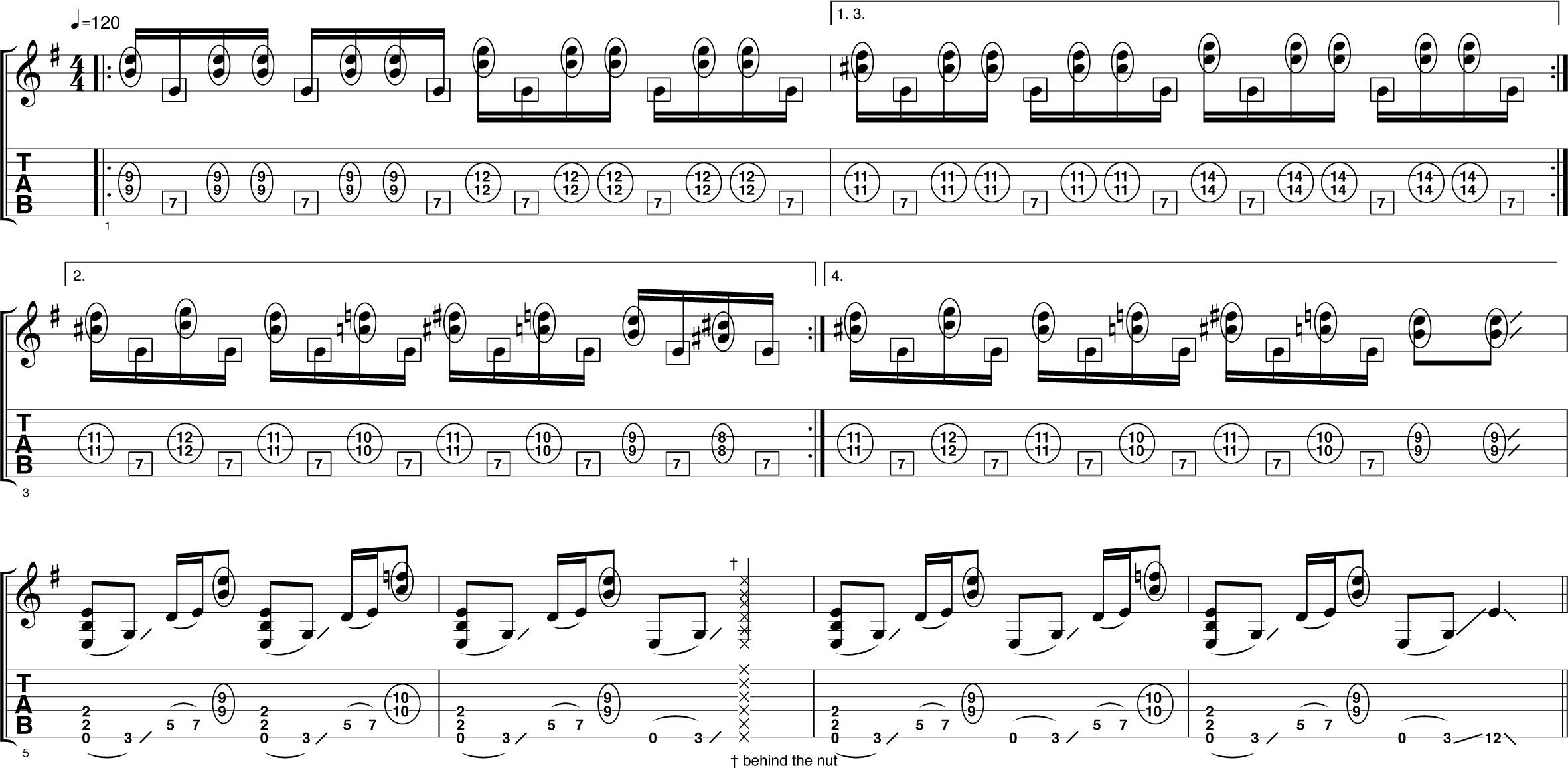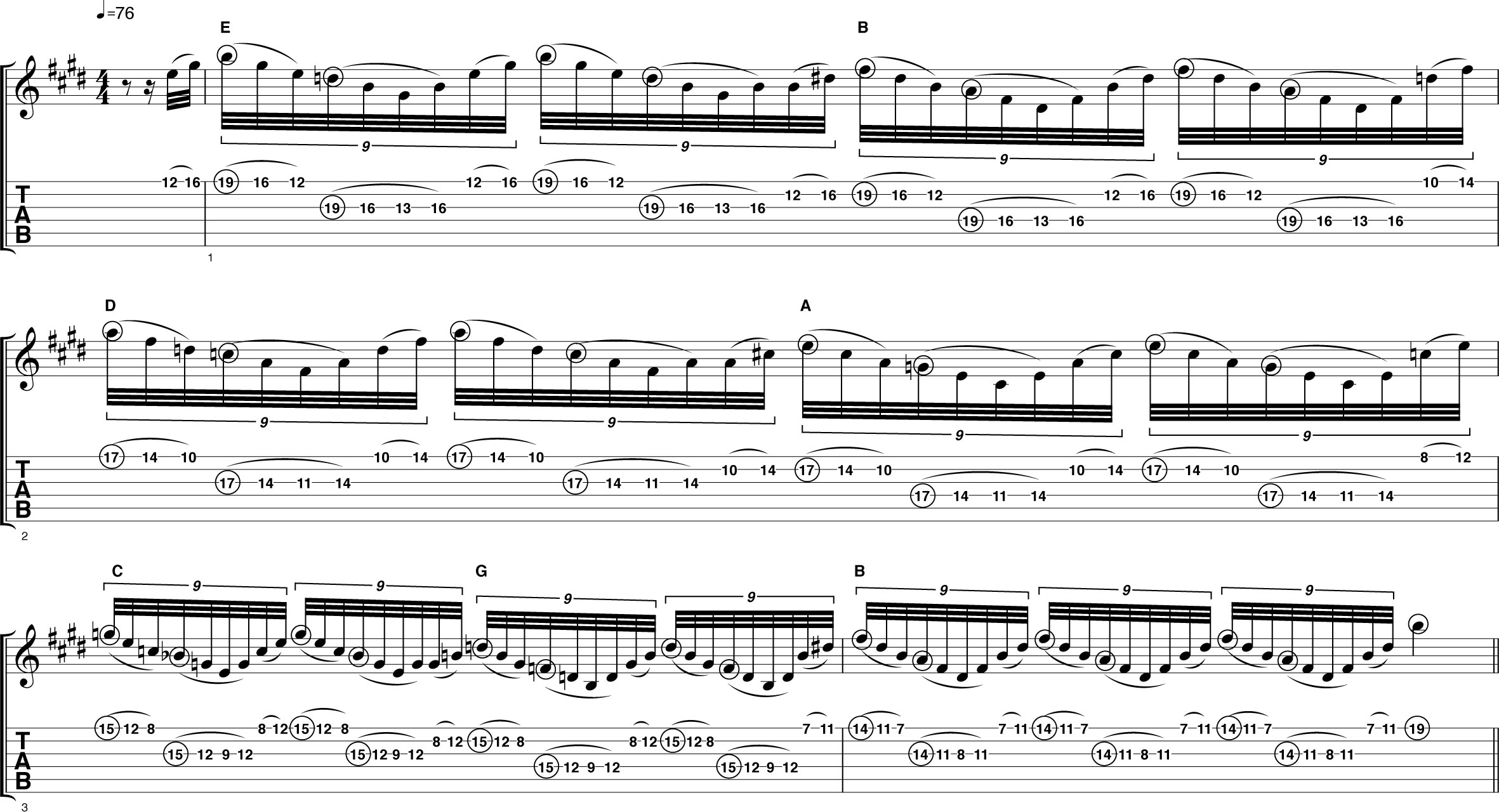30-day guitar challenge, day 27: John 5 guest lesson
Country-metal ace John 5's shortcuts to shred mastery

30-day guitar challenge: Although best known for his stint as guitarist with industrial metal/shock-rock act Marilyn Manson, John 5 has forged a career of over 25 years as a songwriter and hired gun for artists as diverse as Lita Ford, Rob Halford, David Lee Roth, Rob Zombie and KD Lang.
His playing style fuses the fiery rock techniques of his guitar heroes Eddie Van Halen and Jimi Hendrix with the country stylings of Merle Travis and Chet Atkins. It's a curious blend, indeed.
This month, John takes us through his approaches to quintessential rock techniques string skipping and tapping. His speed is utterly ferocious at times, but we'd urge you to stick with the lesson even if up-tempo playing isn't your bag.
All of John's examples in this month's video lesson can be distilled down to simple ideas, each less than a bar of music in length, which can then be moved around the fretboard to create more sophisticated licks. Focusing on these basic ideas will help you to put together your own more advanced creations.
String-skipped arpeggios
John kicks off his lesson with a look at string-skipped arpeggios. These are the notes of a chord (arpeggios) played across several strings but omitting and jumping over (skipping) one or more strings. The name of the technique is self- explanatory, then.
John's improv boils down to a one-bar arpeggio - he simply moves the shape around the fretboard to outline a chord progression. What this means for you is that you only have to master one bar of music. John slowly outlines the lick in 12th position, so start here before moving the shape around the neck. John plays fearsomely quickly at times, so make sure you practise slowly.
Basic arpeggio shape

To begin with, John plays this reasonably straightforward E arpeggio. If you can master this shape you'll be able to piece together the more challenging lick that follows. Make sure to spread your fingers out so that your first finger plays the 12th fret and your fourth finger plays the 16th fret.
Get the MusicRadar Newsletter
Want all the hottest music and gear news, reviews, deals, features and more, direct to your inbox? Sign up here.
Basic arpeggio shape tab (right-click to download)
Chord progression

Here John is playing exactly the same shape as the previous example. He simply changes position on the fretboard to make each arpeggio outline a different chord, creating this progression: E B D A C G B.
We recommend you don't attempt to play at John's lightning speed right away. Practise slowly and focus on playing cleanly.
Chord progression tab (right-click to download)
Tapped rhythm and lead ideas
Here John uses tapping in both rhythm and lead playing. Tapping simply means hammering onto a string - without picking - in order to sound the note. You can use both your fret hand and pick hand to do this. Tapping a rhythm part is unusual but John demonstrates a reasonably simple groove based on a two-note chord and a root note.
The rhythm pattern is based on just half a bar of music. John's lead lines are intricate nine-notes-per-beat licks. Once again, though, there is just one shape to learn, which you can move around the fretboard.
Rhythm groove 1

John taps the two-note chords in bars 1 to 4 with his pick hand (circled notes) and taps the single-note with his fret hand (squared notes).
The basic groove is just two beats of music, so slowly practise the first half of bar 1 until you get a feel for it. Bars 3 and 4 simply involve moving the two-note chords around the neck.
Rhythm groove 1 tab (right-click to download)
Rhythm groove 2

In the previous example only the two-note chords changed. Here John mixes things up by also changing the root notes.
This is a nifty way to outline a chord progression with quite a sophisticated sound. The two-note chords ascend as the bass notes descend.
Rhythm groove 2 tab (right-click to download)
Tapped arpeggios

John reprises the sequence of arpeggios from earlier on here, this time to demonstrate how tapping can be used to navigate the chord progression.
Although John plays at a fierce tempo the idea is a simple shape comprising just nine notes. Practise the first nine notes of the lick slowly before moving the shape around the neck.
Tapped arpeggios tab (right-click to download)
Total Guitar is Europe's best-selling guitar magazine.
Every month we feature interviews with the biggest names and hottest new acts in guitar land, plus Guest Lessons from the stars.
Finally, our Rocked & Rated section is the place to go for reviews, round-ups and help setting up your guitars and gear.
Subscribe: http://bit.ly/totalguitar










